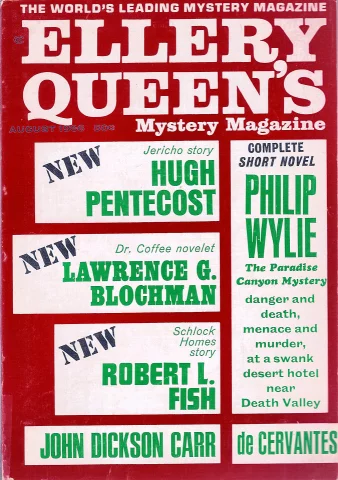 It's that time of year, when Pumpkin Spice becomes a thing, and sketchy Halloween costume shops take over even sketchier strip malls. As the fall chill settles, one starts to wonder: Are those spookiest of writers, Edgar Allen Poe and Ambrose Bierce, truly in their final resting places? Like, tucked away, with at least six feet of hallowed earth separating them (the dead) from us (the living)?
It's that time of year, when Pumpkin Spice becomes a thing, and sketchy Halloween costume shops take over even sketchier strip malls. As the fall chill settles, one starts to wonder: Are those spookiest of writers, Edgar Allen Poe and Ambrose Bierce, truly in their final resting places? Like, tucked away, with at least six feet of hallowed earth separating them (the dead) from us (the living)?I can offer you no such surcease of sorrow.
 |
| In this corner, the friendly, modern-day Jack O'Lantern... |
 |
| ...and in this corner, a Samhain-era Jack O'Lantern. It's made from a turnip, and it will swallow your soul. |
 |
| Edgar Allan Poe. I dare you to photo shop a straw hat onto this. |
Don't count on it.
If there's anyone who'd warrant vengeance from beyond the grave, its Edgar Allan Poe. The means are questionable, but the motives are as clear as a gold bug on a black cat.
First, Poe's death is shrouded in mystery. I don't believe he ended up in that Baltimore gutter wearing someone else's clothes just because he was at the tell-tail end of a bender. I like the cooping theory. In those days of rampant voter fraud (not to diminish our own era of Russian meddling), travelers were kidnapped, cooped up in rooms (hence "cooping"), and force-fed booze and drugs. A pretty sweet deal for some, but deadly for others. The blitzed-out saps were coerced into voting repeatedly at different polling stations. Their clothes were switched so they wouldn't be recognized.
Poe was found near a polling station, out of his head. He was wearing farmer's clothes, including a straw hat. There's no way that The Godfather of Goth cavorted amongst the literati of Virginia and New York in a straw hat like some Leatherstocking Tales reject. This man was cooped.
 |
| Rufus Griswold wrote a scathing review of Leaves of Grass by Walt Whitman (pictured here). Whitman mockingly included the review in later editions. |
Griswold wrote a scathing obit of Poe for the NewYork Tribune that was widely reprinted. Next, Griswold conned his way into being Poe's literary executor. He wrote a fake biography of Poe that appeared in Poe's anthologies. It portrayed Poe as an addict, gambler and army deserter. This false image of Poe as an evil, pathetic genius stuck.
 |
| Edgar Allan Poe's grave marker. It's likely that Poe is nearby. |
In 1978, the Maryland Historical Magazine published Charles Scarlett, Jr's "A Tale of Ratiocination: The Death and Burial of Edgar Allan Poe." Scarlett proposes that through a series of grave-marker mix-ups, Baltimore botched Poe's reburial. Instead of digging up Poe, Baltimore disinterred the remains of Phillip Mosher, a young fallen soldier from the War of 1812. Scarlett presents a pretty interesting theory.
George W. Spence, a sexton who oversaw the first exhumation of Poe, said that he lifted up Poe's skull, and "his brain rattled around inside just like a lump of mud." Brains rot pretty quickly. Bullets don't. If Phillip Mosher was killed in the War of 1812 by a shot to the head, the hunt for Poe's corpse continues.
 |
| Ambrose Bierce and skull. |
 |
| Quentin Tarantino and Robert Rodriguez put their own twist on the Ambrose Bierce legend. Edited by yours truly. |
Bierce, most famous for The Devil's Dictionary and his short story "An Occurence at Owl's Creek Bridge," was a Civil War vet who saw the bloody horrors of war up close. Bierce hilariously said war was "God's way of teaching American's geography," but he found little humor on the battlefield. He fought on the Union side in hellish battles at Shiloh and Kennesaw Mountain. His writing is imbued with those experiences. Bierce suffered a head wound at Kennesaw Mountain, which some claim was the cause of his bouts of booziness and unmatched orneriness.
 |
| Bierce's most famous story collection, which includes "An Occurrence at Owl's Creek Bridge." |
 |
| Pancho Villa: General, Mexican revolutionary, and maybe one of the last people to see Ambrose Bierce alive. |
Bierce was killed at the Battle of Ojinaga, fighting the Federales alongside Villa.
Bierce was only wounded at Ojinaga, but eventually succumbed to his injuries at the Marfa refugee camp.
Bierce was executed by a Federale firing squad at the desert village of Icamole.
Bierce was executed by a Federale firing squad at the desert village of Sierra Mojada.
Others believe Bierce offed himself somewhere in the Grand Canyon, one of his favorite hangouts. There are no eyewitnesses, reliable or otherwise, to support this claim.
At least Poe got a coffin and a handful of mourners. If Bierce died in battle, he was likely dumped in a mass grave and burned. Death by firing squad meant he got his own hole in the ground but none of the other trimmings. There's a small monument for him at Sierra Mojada, but the remains of Bierce are nowhere to be found.
 I'd say the best way to placate Poe and Bierce this Halloween is to read their works. You don't even have to read the scary stuff. Poe's tales of ratiocination starring amateur sleuth C. Auguste Dupin are a must for any fan of crime fiction. Bierce's The Devil's Dictionary holds up as a manual of biting-though-meaningful sarcasm.
I'd say the best way to placate Poe and Bierce this Halloween is to read their works. You don't even have to read the scary stuff. Poe's tales of ratiocination starring amateur sleuth C. Auguste Dupin are a must for any fan of crime fiction. Bierce's The Devil's Dictionary holds up as a manual of biting-though-meaningful sarcasm.You may want to read some Shakespeare, too. In 2016, archaeologists examined Shakespeare's grave using GPR scanning. The study showed that the grave was disturbed after Shakespeare was buried. GPR images also revealed that Shakespeare's skull is missing.
Happy Halloween!
I'm Lawrence Maddox. My latest novel Fast Bang Booze is available from Down and Out Books (downandoutbooks.com). You can contact me at Madxbooks@gmail.com.









































